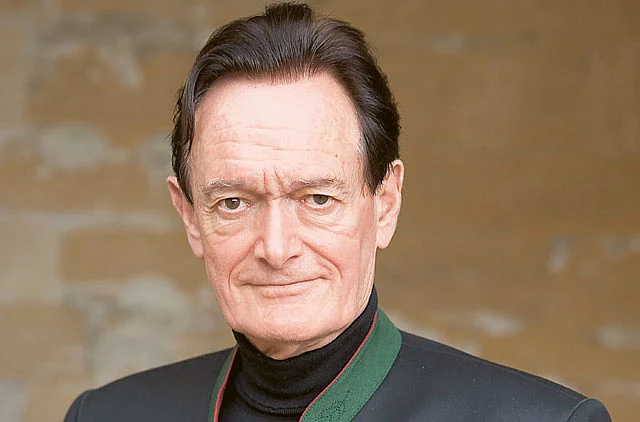Interpreter of symbols
Martin Kemp explores how certain images set themselves apart and become icons

Every day we are surrounded by symbols and icons.
They are used in branding, advertisement and also to represent different movements or ideologies.
Despite their constant presence and penetration in our lives, we hardly ever sit down and contemplate the history and meaning of these symbols.
In his latest book Christ to Coke: How Image Becomes Icon, Martin Kemp has attempted to break down the most iconic imagery of our time to define what an icon is and how it is formed.
Kemp is based at Oxford University as an Emeritus Research Professor. His expertise lies in imagery in art and science from the Renaissance to the present day. He has written several books about Leonardo da Vinci and on imagery in anatomy, natural history and optics, including The Science of Art: Optical Themes in Western Art from Brunelleschi to Seurat.
Kemp's interest in the topic extends from his various areas of research.
"As a Leonardo da Vinci specialist you keep coming across symbolism. I also write a regular column for a nature and science magazine — where I wrote about the image for Einstein. I began to think what it is about these very diverse images that make them icons," Kemp said.
Unlike his other more academic books, Christ to Coke targets a larger, less specialist audience. Heavy on images and descriptions, the book gives an entertaining glance at how symbols are formed. Kemp looks at 11 different icons of today and their journey into iconic status.
Kemp looks into how the image of Cuban revolutionary Che Guevara became such a popular fashion icon among college students and how the Coca-Cola bottle's brand image has grown from strength to strength to become the icon it is today.
In his process of narrowing down his 11 symbols, Kemp talked to a lot of people and started collecting symbols in an indiscriminate way.
"It became apparent that they began to fall into categories. There was a reasonable classification you could come up with — religious, contemporary events, people, product design and commercial logo. It seemed my set worked quite nicely with 11 categories," Kemp said.
At first glance, the images have no connection with each other. The icons presented come from all strands and corners of the world with backgrounds in politics, art and science: the Christ, the Cross, the Heart, the Lion, Mona Lisa, Che Guevara; Nick Ut's 1960s photograph of the napalmed girl in Vietnam; the stars-and-stripes flag of the United States; the Coke bottle; the DNA helix and E=mc².
"I don't think there is any rule as to where it necessarily comes from. Some have pronounced beginnings such as the design of the Coke bottle in 1915. Others, such as the heart, come from a number of sources," Kemp said.
The anchoring question posed throughout the book is what makes an icon an icon? "To become an enduring iconic image it needs to separate itself out from its immediate context and have a broader meaning, rather detached from its original meaning. It needs to escape from its immediate confines and become something that means things to a variety of people and not have a consistent meaning," Kemp said.
Kemp cites the double helix of DNA, which appears in dress designs, advertisements, jewellery and perfume bottles.
"It carries this idea of the explanation of life. Even if we don't understand it, there's that sense that it symbolises life, great biological understanding and science in a broader sense. It becomes very open in its interpretive framework," Kemp said.
Icons emerge from a range of origins such as products and events but not every event is defined by an iconic image.
"You can have historic events of enormous impact and not have a definitive image. It must have some peculiar stickability. In the 9/11 World Trade Center bombings, there are famous images, but I don't think one of them is a singular defining image.
"The Arab Spring does not have a defining image but it doesn't mean one isn't going to emerge. In the Tiananmen Square incident, the image of the young man standing in front of the tank has separated itself out; in the Vietnam War, the image of the napalmed girl is used widely, but it took some time for it to become the defining image of the war," Kemp said.
So what are the major icons that emerge from the Middle East? "The Middle East is interesting in that obvious aspects of religion don't generate iconic images. Buildings have a defining effect on the city. The Burj Khalifa is an iconic image of the UAE, just as the Sydney Harbour Bridge is of Sydney," Kemp said.
While he has no immediate plans to write a second book, Kemp said if he were to consider a series, he would pick buildings and moving images.
Martin Kemp will take part in a panel discussion on the power and glory of the icon Saturday at the InterContinental Hotel, Dubai Festival City, as part of the Emirates Airline Festival of Literature. Visit www.emirateslitfest.com for more details.
Sign up for the Daily Briefing
Get the latest news and updates straight to your inbox
Network Links
GN StoreDownload our app
© Al Nisr Publishing LLC 2025. All rights reserved.